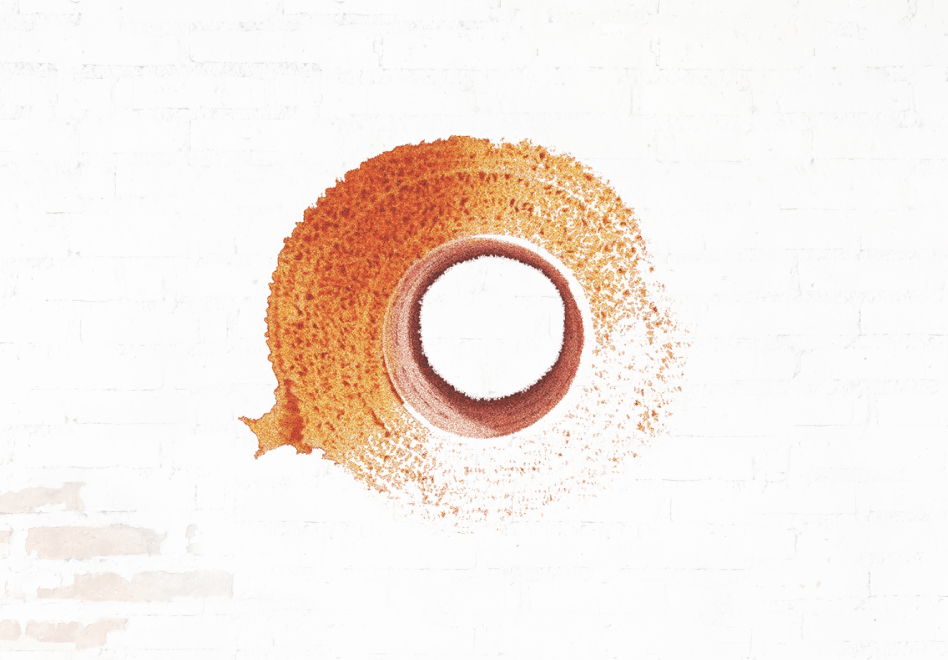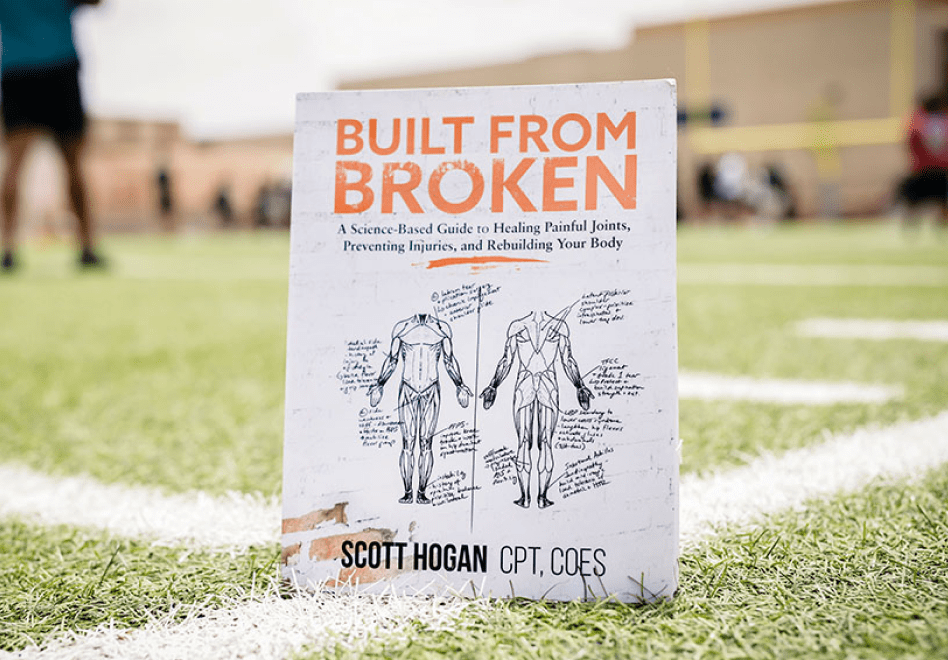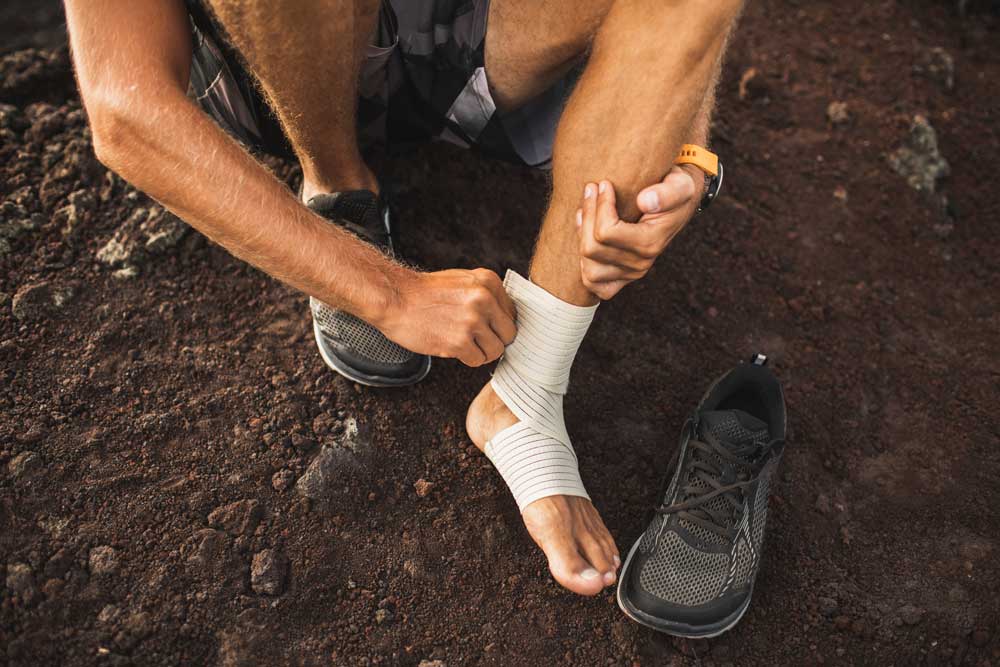
Be built (to last).
The right supplements can help you recover naturally and build a resilient body.
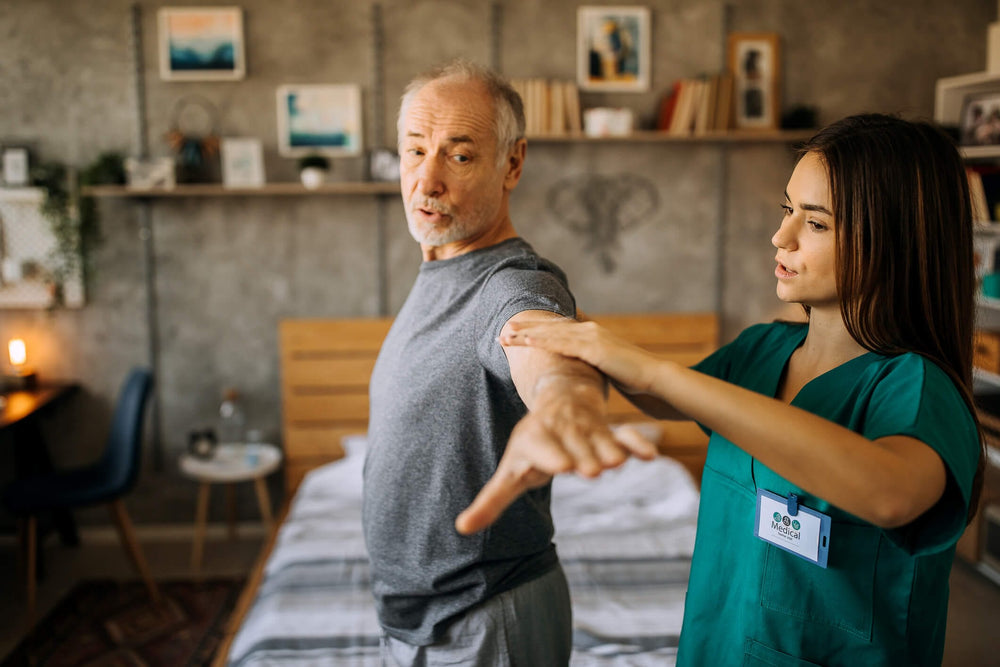
Supplement Quiz
Take this short quiz to discover the perfect supplements for your needs and goals.
About SaltWrap

Built from Broken
Get the best-selling book from SaltWrap founder, Scott Hogan, and start rebuilding today.
How to Combat Sarcopenia (Age-Related Muscle Loss) with Resistance Exercise, Nutrient Timing, and Natural Supplements
by Scott Hogan, ACE-CPT, COES
What is sarcopenia?
Sarcopenia is essentially age-related muscle loss.
Although sarcopenia is associated with the elderly, it can also occur in middle-aged and younger populations.
The clinical definition of sarcopenia is a “syndrome characterized by progressive and generalized loss of skeletal muscle mass and strength” that is highly correlated with loss of physical function and disability, lower quality of life, and death risk.
There are two main types of sarcopenia—primary and secondary.
Primary sarcopenia refers to age-related muscle loss when no other causes are determined. Secondary sarcopenia is muscle loss that presents as a side effect of another health condition or state. Some examples of secondary sarcopenia include muscle loss from disease-related bedrest and muscle loss due to neurological conditions.
The risk of primary sarcopenia increases with advancing age. Here are some quick illustrative stats:
- After age 30, muscle mass decreases by 3–8% per decade
- 5-14% of people aged 65 to 69 have sarcopenia
- Up to 53% of people more than 80 years old do
Though it is typically associated with age, sarcopenia can occur in middle-aged populations and younger. The potential causes are many and usually multifactorial. But at the most practical level, sarcopenia is caused by lack of physical activity, malnutrition, and periods of immobilization. Beyond these three pillars, there are many disease states that can cause sarcopenia as well.
Though sarcopenia is common, it is not inevitable. The primary focus for combating sarcopenia should be resistance training combined with nutrient interventions that upregulate muscle-building processes (while also preventing muscle protein breakdown). As you’ll see, nutrient composition and timing of supplementation can dramatically improve the way your muscles respond to resistance training.
But before diving into supplementation, let’s cover our bases. To earn the right to talk about supplements, we need to understand why sarcopenia matters, what causes it, and what we can do from an exercise, nutrition, and lifestyle standpoint to combat it.

Why does sarcopenia matter?
Sarcopenia is one of the most prevalent, preventable, and actionable age-related syndromes or diseases. It’s also one of the most consistent predictors of mortality and quality of life in middle-aged populations and the elderly. Decreases in muscle mass are accompanied by relative increases in fat mass, increased insulin resistance, decreased bone density, and joint dysfunction. At its worst, sarcopenia leads to loss of physical independence and disability.
A study published in Medicine & Science in Sports & Exercise showed that low muscle strength and mass was independently associated with elevated risk of all-cause mortality among participants 50 years or older. Another paper published in Nature showed that muscle mass is one of the most reliable health metrics for predicting mortality.
Researchers have examined this problem from the opposite angle as well, answering the question: does having more muscle make you healthier?
Yes, it certainly does. Having more muscle improves metabolic health markers such as insulin sensitivity, reduces all-cause mortality risk, and may reduce the risk of cardiovascular disease, heart attacks, and strokes.
Bottom line: sarcopenia dramatically lowers quality of life and increases risk of early death. And, there are several science-backed steps that you can take to protect yourself.
What is the difference between sarcopenia, cachexia, and age-related muscle loss?
Sarcopenia is not to be confused with cachexia, which is a critical wasting of total body mass due to severe chronic illness. Sarcopenia specifically describes excessive loss of skeletal muscle mass.
The difference between sarcopenia and age-related muscle loss is less clear. Though the two terms are often used interchangeably, there are clear guidelines for what constitutes sarcopenia. In clinical practice, a physician or sarcopenia specialist conducts a screening process which can include body mass index analysis, blood tests, muscle strength tests, movement screens, and medical imaging. Based on the scores and risk factors identified, a patient can be diagnosed with sarcopenia.
Symptoms of sarcopenia
Beyond visual muscle loss and weight loss, common symptoms of sarcopenia include:
- loss of strength, especially grip and lower limb strength
- loss of physical stamina
- loss of balance and muscle coordination
🔬 What causes sarcopenia?
Though the exact mechanisms of sarcopenia are not completely understood, and the causes are often multifactorial, we do have a solid list of common causes from research:
1. Sedentary Lifestyle:
While resistance training is the most important exercise intervention, general volume of activity and activity variation are vital for maintaining muscle mass and function with age.
2. Periods of Immobility:
Sarcopenia is conceptualized as a gradual process, but there are almost always precipitating events that lead to periods of immobility and drastic muscle loss. Injuries, surgeries, and other health conditions crop up over time in virtually everyone’s life. If you suffer from a serious injury or medical condition, you could be immobilized for months. Beyond the obvious strategy of avoiding periods of immobility, the inevitability of forced sedentary periods should motivate you to build muscle mass and strength during healthy periods. Likewise, recovering from injuries quickly is a key to maintaining muscle mass over time.
3. Nutrient Deficiencies:
Not eating enough dietary protein is a common contributing factor. Sarcopenia researchers stress the importance of including 25-30 grams of protein with every meal to provide a consistent stream of muscle-building amino acids throughout the day. Many older clients I’ve worked with have expressed they believe they don’t need as much protein as a younger person. But studies show seniors (with acute or chronic illness) require 20-30% more protein to elicit the same muscle-building response.
4. Chronic Inflammation:
A meta-analysis reviewing the connection between inflammation and sarcopenia revealed that age-related muscle loss is strongly associated with elevated CRP (c-reactive protein)—a measure of inflammation in the body.
5. Diseases:
Diseases that affect the nervous system, endocrine system, or immune system often lead to secondary sarcopenia. In some cases, bodyweight stays relatively stable while muscle is lost and fat mass is gained; this is called sarcopenic obesity.
6. Nerve Signal Dysfunction:
Neurological analysis suggests that compromised nervous system function is one of the primary contributors to sarcopenia.
7. Hormonal Changes:
Declines or disruptions in sex hormones, namely testosterone and growth hormone, are often cited as leading causes of age-related muscle loss.
Key metabolic drivers of age-related muscle loss
One of the hallmarks of sarcopenia is impaired cellular responses to muscle-building stimuli. Basically, your muscles no longer adapt and grow from resistance training and physical exercise. This is called protein synthesis resistance—or MPS resistance.
Sarcopenia treatments
There are two primary paths of sarcopenia treatment in a clinical setting. The first and most fundamental is prescriptive exercise, with a focus on load-bearing exercises to build muscle mass and strength. The second intervention is hormone replacement therapy (HRT). This typically involves focusing on raising testosterone and growth hormone levels—two key hormones for building and maintaining muscle mass.
A third treatment strategy that is becoming more common and accepted based on new research is supplementing with a vitamin and amino-acid fortified protein shake immediately after resistance training to prevent excessive protein breakdown and jumpstart new protein synthesis.
How to prevent sarcopenia
A study from the Canadian Journal of Applied Physiology found that the primary driver of age-related muscle loss was not age itself but reduced neuromuscular activity. Researchers concluded that strength training could slow or even halt muscle atrophy and that sarcopenia “should not be conceptualized as a linear process” that begins in middle age.
This study illustrates one of the least discussed but most important aspects of combating sarcopenia: mindset. We have research that clearly outlines methods and tactics for preventing and even reversing sarcopenia. It’s critically important to believe this, and believe that your efforts will pay off. Sarcopenia is not inevitable, and there are science-backed steps you can take to keep your muscle.
Now, on to the tactics.
The three fundamental ways to prevent sarcopenia are:
- Avoid malnutrition (focus on getting enough calories and protein).
- Move your body regularly, under load, and through various movement patterns (train with resistance at least twice per week, walk daily, and find novel movement patterns to explore).
- Avoid prolonged immobilization (avoid serious injuries, prolonged surgery recovery times, and health conditions that require bed rest).
Without these three, no other supplementary strategies will work. However, assuming you are exercising regularly, eating well, and taking care of yourself, there are specific supplements that research shows can not only prevent sarcopenia but reverse it by building new muscle mass.

The most research-backed supplements for sarcopenia
For this analysis, we are going to separate supplement recommendations into two categories—those that have explicitly been studied and proven to combat sarcopenia, and those that likely benefit sarcopenia through logical analysis of their mechanism (e.g. ingredients that are known to buffer against muscle protein breakdown).
Though there are hundreds of ingredients that could provide benefit for sarcopenia patients based on muscle protein synthesis research, only a handful have been studied specifically for their effectiveness in preventing and treating sarcopenia.
In 2021, a metastudy was published in the journal Nutrition Reviews to determine the most effective sarcopenia supplements from a range of studies. Researchers pooled information from 29 studies and 2,255 participants aged 65 years or older with significant age-related muscle loss. The primary supplements studied were protein, amino acids, hydroxymethylbutyrate (HMB), and polyunsaturated fatty acids (pufas).
Here are some of the key findings from the metastudy:
- Nutrient interventions alone without resistance training are not consistently effective. Though the primary cause of sarcopenia seems to be a lack of cellular and neurological responsiveness to stimuli, you still can’t forgo the stimulus and still build muscle. To combat sarcopenia, you need both the stimulus (resistance training) and advanced nutrition methods to improve muscle-building response.
- Protein supplementation alone had limited effectiveness when subjects consumed adequate dietary protein.
- PUFAs (e.g. from olive oil) are categorically ineffective for treating sarcopenia.
- Only amino acids, creatine, HMB, and protein combined with amino acids had a significant positive effect on muscle mass.
- Protein timing is important: studies on protein feeding frequency and post-workout nutrition have shown that when you consume a muscle-building shake can be as important as what is in it.
Protein supplements and sarcopenia
It’s worth quoting the researchers on the most significant finding from this analysis: “supplementation with protein… alone didn’t result in any benefit.”
This is likely due to what researchers call protein synthesis resistance—people with advanced sarcopenia need nutritional support beyond protein supplementation alone to elicit an adaptive cellular response to resistance training. It’s worth noting that amino acid quality varies widely among protein sources, which likely affected the outcomes of the studies.
Essential amino acids (EAAs) for sarcopenia
Interestingly, supplementing with essential amino acids (EAAs) was more effective than protein—even though protein is made up of amino acids. Researchers theorized that high concentrations of fast-absorbing amino acids, namely leucine, are needed to elicit a significant muscle-building response.
It’s no surprise that two other ingredients made the short-list: creatine and HMB. These two show promise for combating sarcopenia even in the absence of resistance training.
Creatine supplementation and sarcopenia
Creatine is considered the most research-backed sports nutrition ingredient for building muscle mass. With well over 500 studies evaluating its effectiveness on muscle mass and exercise capacity, research has shown time and time again that supplementing with 5 grams of creatine monohydrate per day helps build muscle and increases exercise capacity (especially high-intensity exercise). Creatine is also considered relatively safe. Though the research is scant on side effects, commonly reported issues include muscle cramping, dehydration, and gastrointestinal distress.
Sarcopenia-specific studies of creatine indicate that it does not reduce inflammation markers after resistance training as previously thought, but does help older subjects build more muscle and may also help improve bone formation.
HMB supplementation and sarcopenia
As I write this, HMB is my personal favorite sports nutrition supplement and what I believe is the most effective, bang-for-your-dose muscle-building ingredient there is. HMB, a metabolite of the amino acid leucine, has the unique benefit of simultaneously decreasing muscle protein breakdown and increasing muscle protein synthesis. HMB aids muscle growth and maintenance in two distinct ways:
- It decreases muscle breakdown by inhibiting the ubiquitin-proteasome proteolytic pathway (an enzymatic pathway for protein breakdown).
- It increases protein synthesis by stimulating the mTOR pathway.
However, it’s virtually impossible to get the optimal amount of HMB from diet alone. Research shows only around 5% of dietary leucine converts into the muscle-building compound HMB.
That means you would have to consume 60 grams of leucine, or 600 grams of quality protein, to get the optimal 3 gram dosage of HMB per day.
More so than any other ingredient, HMB shows promise for fighting sarcopenia even in the absence of resistance training. A 2013 HMB study of men and women aged 65 or older showed HMB improved strength and muscle mass even in the absence of resistance training, and that it is an “effective intervention for improving all measures of body composition and functionality.”
Collagen peptides supplements and sarcopenia
A randomized trial published in the British Journal of Nutrition showed that compared to placebo, subjects who consumed 15 grams of collagen gained more muscle, lost more fat mass, and gained more muscle strength. Though this study is often cited to support collagen peptides supplementation for muscle building, it’s important to consider two confounding factors. First, this study pitted collagen versus a placebo, so we don’t know if collagen is more or less effective than other types of protein (based on this study alone). Secondly, a specific type of patented collagen (Bodybalance®) was used in this study, so we can’t conclude that any generic collagen will produce the same results.
Beyond the muscle-building benefits, there’s certainly merit to adding collagen to your daily shake to boost collagen synthesis within connective tissue and help your joints keep pace with your growing muscles. Though this study used 15 grams of collagen peptides, other studies indicate a minimum of 5 grams of collagen peptides is the minimum effective dosage for joint health.
Vitamins and minerals for sarcopenia
Sarcopenia studies have revealed two specific vitamins that improve protein synthesis: vitamin C and vitamin D.
A study published in The Journal of Nutrition showed a positive correlation between vitamin C and muscle mass for both men and women. While vitamin C is not likely to stimulate muscle protein synthesis (MPS) on its own, it’s clear that lower circulating vitamin C levels reduce your ability to build and maintain muscle.
Vitamin D is another micronutrient that aids the effects of protein. When added to a high protein drink, vitamin D improves measures of sarcopenia in older adults. Additionally, vitamin D works synergistically with HMB to reduce muscle protein breakdown (in addition to improving joint function).
Magnesium, one of the most fundamental minerals to human health, also deserves mention here. Based on a study from the Belgian Ageing Muscle Society, magnesium, selenium, and calcium are the most promising minerals to prevent and treat sarcopenia.
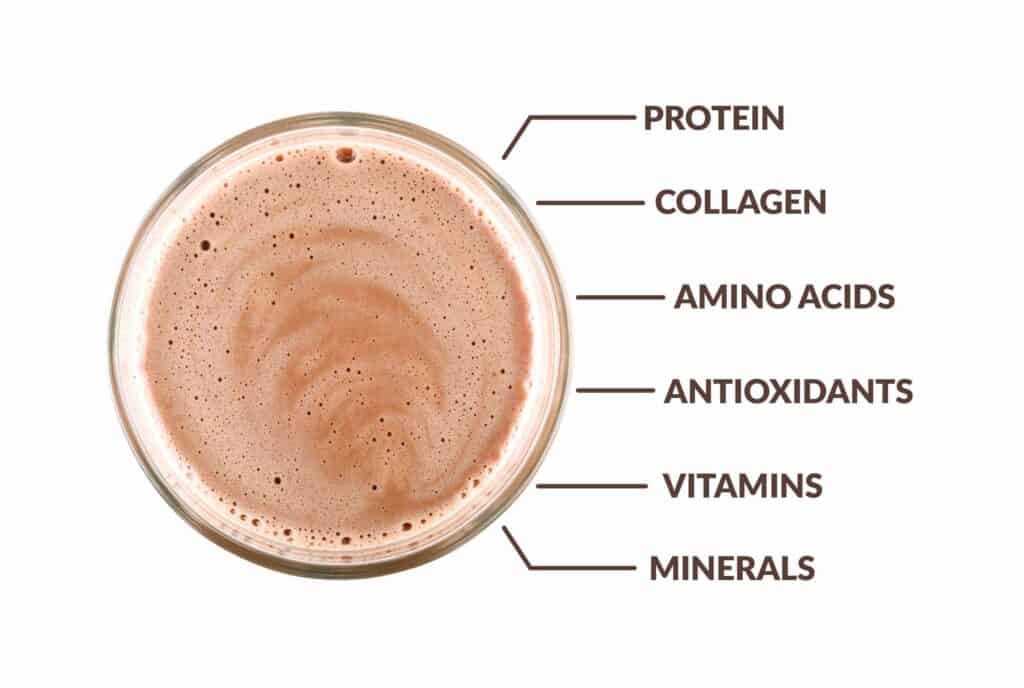
A protein drink fortified with HMB and amino acids helps boost the muscle-building response to resistance training.
🔬 Building your sarcopenia-fighting protein shake
- 20-30 grams of leucine-rich protein (e.g. whey protein or pea protein)
- 5 to 15 grams collagen peptides
- 3 grams of HMB or 7 grams of EAAs
- 90 mg of vitamin C (100% daily value)
- 25 mcg (1000 IU) of vitamin D (125% daily value)
- Optional: 5 grams creatine monohydrate
A step-by-step plan for combating sarcopenia and age-related muscle loss at home
While the research on sarcopenia supplements is promising and exciting, don’t forget to cover your bases. The right supplements may provide a marginal improvement in measures of sarcopenia by themselves, but when combined with intelligent exercise and nutrition they will provide a much more significant muscle-building effect:
- Avoid immobilization: Takes steps to prevent injuries and the need for extended bed rest. Fall prevention measures are especially important.
- Avoid malnutrition: Ensure you eat enough calories and protein to support muscle mass. Though protein needs vary with age, size, and sex, aim to include 25 to 30 grams of high-quality protein with each meal.
- Move your body: Establish a habit of walking daily and continue moving your body in various ways.
- Train with resistance: Train with resistance 2 to 4 times per week using free weights or machines. Focus on compound exercises that work multiple major muscle groups simultaneously. Also, aim for proficiency at all the basic human movements: upper body push (pushups, chest press), upper body pull (weighted rows), squat, hip hinge, lunge, and loaded carry.
- Supplement smart: Consume a fortified protein shake once daily, preferably immediately after a resistance training or early in the morning if you are not training that day.
The book that can help you build muscle at any age
In my best-selling corrective exercise book, Built from Broken, I lay out a complete program for building muscle, improving joint integrity, and expanding mobility.
Here is an excerpt from Built from Broken that illustrates the importance of resistance training. And why older adults especially should make this a top priority for health and longevity:
"A study performed at the Penn State College of Medicine tracked the habits of people age 65 or older over the course of 15 years. Researchers found that those who lifted weights had a 46% lower death rate. Even after adjusting for other health variables such as body mass index and chronic disease, and lifestyle habits such as smoking and drinking, the weight-lifting group still had a 19% lower mortality rate.
Resistance training has even been shown to reduce age-related cognitive decline, slowing down neurodegeneration in people at risk of developing Alzheimer’s. Weight training effectively boosts production of brain-derived neurotrophic factor (BDNF), a naturally occurring protein responsible for nerve cell maintenance. Researchers refer to BDNF as “Miracle Grow for the brain.” Despite the dumb weight lifter stereotypes, resistance training is one of the best things you can do for your cognitive function.
If you’re on the far end of the age ranges in these studies, or you haven’t been able to make consistent fitness progress in recent years, you may be wondering: Is it too late for me? Well, let’s see what the research has to say.
A study published in Frontiers in Physiology demonstrated that previously untrained seniors can build muscle and strength comparable to masters athletes who have been training for decades."
If you are looking for a way to build muscle (at any age) while also bolstering joint and bone health, check out my book, Built from Broken, here.
Frequently asked questions about sarcopenia
What is sarcopenia?
Sarcopenia is a syndrome characterized by progressive and generalized loss of skeletal muscle mass and strength.
What are the symptoms of sarcopenia?
- Loss of muscle mass or body mass
- loss of strength, especially grip and lower limb strength
- loss of physical stamina
- loss of balance and muscle coordination
Can sarcopenia be reversed?
Yes. Though aging is inevitable, and time plans on marching forward without us eventually, several studies show trained and untrained seniors can reverse the effects of sarcopenia by building muscle mass with resistance training, nutrition, and lifestyle interventions.
Is sarcopenia a disease or syndrome?
Sarcopenia is typically considered a syndrome. In 2016, sarcopenia was recognized as an independent condition with an International Classification of Diseases-10 code (M62.84). This represents a significant step toward recognizing sarcopenia as a disease and increasing the potential for new diagnostic tools and therapeutic innovations.
What is the difference between primary and secondary sarcopenia?
Primary sarcopenia refers to age-related muscle loss when no other causes are determined. Secondary sarcopenia is muscle loss that presents as a side effect of another health condition or state.
What exercises help prevent sarcopenia?
According to a meta-analysis of 22 clinical studies, the best exercises for sarcopenia are resistance training (weight training), aerobic training, and balance training. Research indicates that combining these three exercise methods provides greater improvements with fewer adverse effects than utilizing only one. Also, slow eccentric training is a safe way for seniors to exercise with resistance while optimizing joint health.
What are the best supplements for sarcopenia?
- Essential Amino Acids (EAAs): 7 grams daily
- Creatine Monohydrates: 5 grams daily
- HMB: 1.5 to 3 grams daily
- Protein fortified with amino acids or HMB (with at least 20 grams of protein per serving/meal)
Founder: Scott Hogan

I created SaltWrap to bring together the most practical ideas in therapeutic sports nutrition, corrective exercise, and functional fitness — with the goal of keeping you (and myself) strong, mobile, and built to last.
I've worked as an A.C.E. Certified Personal Trainer, Orthopedic Exercise Specialist, and nutritional supplement formulator.
But more importantly — I've spent most of my life battling injuries, joint pain, and just being plain beat up. So I know what it's like to struggle toward fitness goals.
SaltWrap is here to push you through injuries, setbacks and perceived physical limitations. To a place beyond what you think you're capable of. Sign up here to stay in the loop.
Learn more about my best-selling injury prevention and recovery book, Built from Broken.

